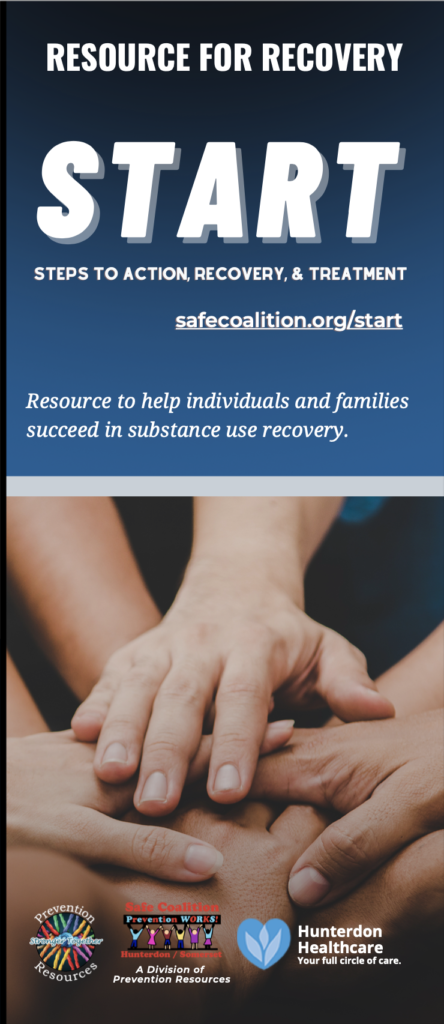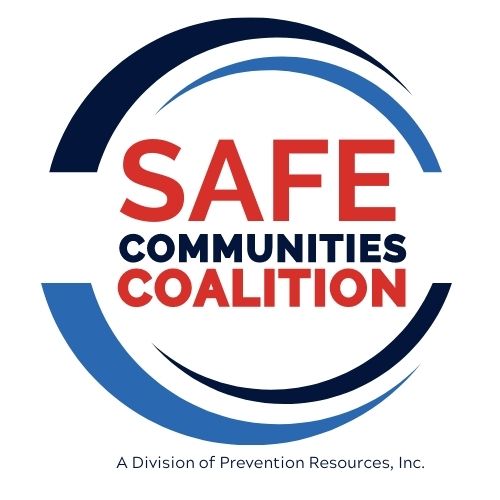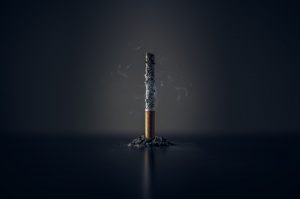START - Steps to Action, Recovery, & Treatment
Information to resources to help individuals and families succeed in substance use recovery.

About
In 2013, Safe Communities Coalition of Hunterdon and Somerset partnered with Hunterdon County Prosecutor’s Office, and Hunterdon County Chief’s Association to create START (Steps To Action Recovery and Treatment).
First launched for First Responders to provide to overdose survivors and loved ones as a tool to bridge the treatment gap and prevent additional overdose,
START has since become a symbol of reliable resources and information in our community.
In 2021, Safe Coalition partnered with Hunterdon Medical Center and their Residents to develop a tool for healthcare providers to help patients succeed in recovery from substances.
Download PDFs
For Individuals
Any person interested or seeking recovery from substance use.
START here
Reaching out to a Recovery Coach can help guide a person to their next steps in recovery. Prevention Resources, Inc. offers free peer support services to individuals interested in recovery.
Prevention Resources, Inc.’s Certified Peer Recovery Coaches:
For individuals seeking substance use recovery
- Individual peer support
- Wellness planning
- Referrals to no-cost counseling
- Cost: No cost
- Contact: 908-864-2940
Open Door Recovery Center
- For individuals seeking substance use recovery
- Virtual & In-Person Support
- Sober activities
- Diverse support groups
- Serves: All ages
- Cost: No cost
- Website: njprevent.com/open-door-recovery
- Facebook @OpenDoorRecoveryCenter
- Contact: 908-864-2940
Free Early-Intervention of Prevention Resources, Inc.
- 6-week programs
- Educational sessions for individuals and caregivers
- Substance use screening & evaluation
- Virtual or In-person
- Serves: Adolescents, Adults
- Cost: No cost for Hunterdon Residents
- Website: njprevent.com/early-intervention-services/
- Contact: 908-782-3909
Prevention Resources, Inc.
- Level 1, Substance use services
- Substance Use Screening
- Substance Use Evaluations
- Individual, Out-Patient treatment
- Referrals, and more..
- Serves: Adolescents, Adults
- Cost: Sliding scale
- Web: tinyurl.com/PRprograms
- Facebook @NJPrevent
- Contact: 908-782-3909
Hunterdon Behavioral Health
- Mental health and substance use services
- Assessments, Evaluations
- Out-Patient (OP)
- Intensive Out-Patient (IOP)
- In-Patient (IP) Alcohol Detox
- Referrals, and more..
- Serves: Adolescents, Adults
- Web:hunterdonhealthcare.org/service/behavioral-health
- Contact: 908-788-6401
Why get an assessment?
Having a professional complete a substance use evaluation/assessment can help determine what level of care might be most appropriate.
Some of the NJ Hotlines will complete a free phone intake and work with your insurance to connect you to treatment. If you do not have insurance, they may also guide you to medicare/medicaid services.
- Perform Care
- Through the New Jersey Children’s System of Care, PerformCare connects young people and their families statewide to the care they need to be well.
- 1-877-652-7624 (24 hours a day, 7 days a week)
- https://www.performcarenj.org
- ReachNJ
- 1-844-REACH-NJ (1-844-732-2465)
- Serves to simplify the process for those seeking help from addiction. ReachNJ.gov
- NJ Addiction Services (IME)
- 844-276-2777
- Provides information and referral to substance use treatment statewide.
- NJ Connect For Recovery
- 855-652-3737
- Dedicated to opioid addiction, serves both the person struggling with addiction as well as their loved ones.
- NJ MentalHealthCares
- 866-202-4357
- Directs callers to appropriate service entry points.
- 2nd Floor
- 888-222-2228
- Confidential and anonymous helpline for NJ’s young people.
- NJ Hope Line
- 855-654-6735 // Peer Support & Suicide Prevention.
Accessible in English and Spanish. If you have your device set to Spanish, the website and app will appear in Spanish. (Si tiene su dispositivo programado en español, el sitio web y la aplicación aparecerán en español.)
Mobile Phone App
- HELP App – Prevention Resources
https://njprevent.com/help-app/
Prevention Hub
For Loved Ones
Family members, significant others, and friends.
Sharing the Hope Family Support Center of Prevention Resources, Inc.
- For loved ones of those struggling with substance use
- Support, education, & empowerment
- Naloxone trainings with kits
- Cost: No cost
- Website: njprevent.com/family-support-center
- Facebook @SharingTheHopeFSC
- Contact: Jennifer Denlinger
- jdenlinger@njprevent.com
- 908-309-6203
Free Family Support services offered by Prevention Resources uses CRAFT support model.
Why seek peer support? CRAFT teaches family members how to care for themselves and in turn they may be able to help their loved one. Research studies have shown that family members benefit by reducing their depression, anxiety, anger and physical symptoms.
PDF Resource on Loved One Support: SAMHSA’s Family, Parent and Caregiver Peer Support in Behavioral Health
Safe home storage of alcohol, medicine, or potentially misused household items.
- Resource: http://njprevent.com/parentsholdthekey/
- Download Brochures:
Keep Naloxone readily available
- Perform Care
- Through the New Jersey Children’s System of Care, PerformCare connects young people and their families statewide to the care they need to be well.
- 1-877-652-7624 (24 hours a day, 7 days a week)
- https://www.performcarenj.org
- NJ Connect For Recovery
- 855-652-3737
- Dedicated to opioid addiction, serves both the person struggling with addiction as well as their loved ones.
- NJ MentalHealthCares
- 866-202-4357
- Directs callers to appropriate service entry points.
- 2nd Floor
- 888-222-2228
- Confidential and anonymous helpline for NJ’s young people.
- NJ Hope Line
- 855-654-6735 // Peer Support & Suicide Prevention.
For Service Providers
Healthcare, schools, etc.
Talk about prevention:
- Safe home storage of alcohol, medicine, or potentially misused household items.
- Safe medicine disposal reduces access to potentially misused prescriptions.
- More information
Screening saves lives:
- Screening is not a diagnoses or treatment, but flags those that might need more help/referral
- Don’t wait for cancer to get to stage 4, interrupt at stage 1!
Naloxone:
- Just as you would for CPR/AED, have Naloxone readily accessible
- Ensure that everyone on staff know how to use it
Healthcare Providers & MAR (Medicated Assisted Treatments/Recovery):
- Offering MAR helps to increase success rates of recovery
- Reduces stigma
Common Screening Tools
- Depression:
- PHQ-9 (Patient Health Questionnaire)
- Anxiety:
- GAD-7 (Generalized Anxiety Disorder 7)
- PTSD:
- PC-PTSD-5 (Primary Care PTSD Screen for DSM-5)
- Substance Use:
- Alcohol: AUDIT C
- Drugs: CRAFFT (Adolescents),
- DAST (Adults), TICS, TAPS
SBIRT (Screening, Brief Intervention, Referral to Treatment)
https://njprevent.com/sbirt/
SBIRT is a method that utilizes existing screening tools to flag substance issues before they become severe, or to offer treatment earlier than currently standard.
Screening:
Standardized tools to quickly assess risk level
- Pre-screen is universal, short
- Full screen is targeted (small population)
Brief Intervention:
- Help patients understand their substance use and health impact; motivate behavior change.
- Creates rapport and dialogue between screens
Referral to Treatment:
Help patients showing signs of a substance use disorder to access specialty care/resources
Often <5% of patients
If someone screens as having concerning use of substances:
- Have a conversation about their readiness for change and possible harms of continued use
- Provide START Brochure or additional resources for recovery
Use a de-stigmatizing approach by choosing language and behaviors that are inclusive and kind
Download START Materials here:
Order START Materials:
- Contact Prevention Resources to order FREE materials for your office: 908-782-3909
- Brochures: 250 Brochures per box
- 1-Page: Can be ordered as a 8.5″ x 11″ handout, Poster, or more.
START Training
- Contact: Amy Menes (amenes@njprevent.com) or Erin Cohen (ecohen@njprevent.com)
- 908-782-3909
Stigma-Free Training
- Contact, Coordinator: Kacey McKown
- klmckown@njprevent.com
- 908-517-4664
Learn More
Important Terms
Source: https://www.samhsa.gov/brss-tacs/recovery-support-tools/peers
Who Are Peer Workers?
Peer support workers are people who have been successful in the recovery process who help others experiencing similar situations. Through shared understanding, respect, and mutual empowerment, peer support workers help people become and stay engaged in the recovery process and reduce the likelihood of relapse. Peer support services can effectively extend the reach of treatment beyond the clinical setting into the everyday environment of those seeking a successful, sustained recovery process.
- Learn about the foundational core competencies for peer workers in behavioral health services.
- Access a list of frequently asked questions about core competencies for peer workers.
- Learn more about the process of recovery.
Peer Support Role
Peer support workers engage in a wide range of activities. These include:
- Advocating for people in recovery
- Sharing resources and building skills
- Building community and relationships
- Leading recovery groups
- Mentoring and setting goals
Peer support roles may also extend to the following:
- Providing services and/or training
- Supervising other peer workers
- Developing resources
- Administering programs or agencies
- Educating the public and policymakers
Peer support workers may need to develop additional core competencies to provide services to specific groups who also share common experiences, such as family members. The shared experience of being in recovery from a mental health and/or substance use condition or being a family member is the foundation on which the peer recovery support relationship is built in the behavioral health arena.
There are MANY pathways to recovery.
- Peer support groups
- Recovery Centers
- SMART Recovery
- Recovery Dharma
- 12-Step (AA, NA, Al-anon, Alateen)
- many more!
- 1-1 support
- Early Intervention
- Treatment programs:
- OP (Out patient)
- IOP (Intensive Out Patient)
- PHP (Partial Hospitalization)
- Detox
- In-Patient (Rehabilitation)
- Halfway Houses
- 3/4 Houses
- Medicated Assisted Recovery (MAR)
- Medications that help prevent reoccurrence of use and improve successful recovery.
Source: https://harmreduction.org/about-us/principles-of-harm-reduction/
Harm reduction is a set of practical strategies and ideas aimed at reducing negative consequences associated with drug use. Harm Reduction is also a movement for social justice built on a belief in, and respect for, the rights of people who use drugs.
Foundational Principles to Harm Reduction
Harm reduction incorporates a spectrum of strategies that includes safer use, managed use, abstinence, meeting people who use drugs “where they’re at,” and addressing conditions of use along with the use itself. Because harm reduction demands that interventions and policies designed to serve people who use drugs reflect specific individual and community needs, there is no universal definition of or formula for implementing harm reduction.
However, National Harm Reduction Coalition considers the following principles central to harm reduction practice:
- Accepts, for better or worse, that licit and illicit drug use is part of our world and chooses to work to minimize its harmful effects rather than simply ignore or condemn them
- Understands drug use as a complex, multi-faceted phenomenon that encompasses a continuum of behaviors from severe use to total abstinence, and acknowledges that some ways of using drugs are clearly safer than others
- Establishes quality of individual and community life and well-being — not necessarily cessation of all drug use — as the criteria for successful interventions and policies
- Calls for the non-judgmental, non-coercive provision of services and resources to people who use drugs and the communities in which they live in order to assist them in reducing attendant harm
- Ensures that people who use drugs and those with a history of drug use routinely have a real voice in the creation of programs and policies designed to serve them
- Affirms people who use drugs (PWUD) themselves as the primary agents of reducing the harms of their drug use and seeks to empower PWUD to share information and support each other in strategies which meet their actual conditions of use
- Recognizes that the realities of poverty, class, racism, social isolation, past trauma, sex-based discrimination, and other social inequalities affect both people’s vulnerability to and capacity for effectively dealing with drug-related harm
- Does not attempt to minimize or ignore the real and tragic harm and danger that can be associated with illicit drug use
A co-occurring condition means that a person might have a substance use disorder and at least one mental health condition; such as mood, personality, eating, or developmental disorders.
A mental health assessment or a psychological evaluation can help determine co-occurring conditions, and can help provide information or treatment recommendations.
If you know or suspect you have co-occurring conditions, it can be beneficial to seek a treatment provider that is knowledgeable in both substance use and mental health.
Treatment providers or programs will typically make known on their website if they treat co-occurring conditions.Co-Occurrinmg
Substance use and addiction are preventable.
Results from NIDA-funded research have shown that prevention programs involving families, schools, communities, and the media are effective for preventing or reducing drug use and addiction. Although personal events and cultural factors affect drug use trends, when young people view drug use as harmful, they tend to decrease their drug taking. Therefore, education and outreach are key in helping people understand the possible risks of drug use. Teachers, parents, and health care providers have crucial roles in educating young people and preventing drug use and addiction.
(source: https://nida.nih.gov/publications/drugfacts/understanding-drug-use-addiction)
Preventing addiction or the progression of addiction might look like:
- Prevention programs that teach skills or best practices, and help individuals make informed decisions.
- Reducing access and availability to harmful substances in the home, or community.
- Promoting an inclusive, caring, and equitable community where all individuals can thrive.
- Promoting access to help, support, and information that might interrupt the progression of addiction.
Stigma
What is stigma?
- Stigma is a discrimination against an identifiable group of people, a place, or a nation. Stigma about people with substance use disorders might include inaccurate or unfounded thoughts.
Where does stigma come from?
- Stigma around addiction may come from old and inaccurate ideas, or fear of things that are different or misunderstood. Today, we know that addiction is a chronic, treatable medical condition. We also know that people can recover and continue to lead healthy lives.
How does it affect people with substance use disorder?
The Seven Types of Stigma:
(Source, https://www.nami.org/Blogs/NAMI-Blog/October-2018/Overcoming-Stigma)
- Public Stigma
- This happens when the public endorses negative stereotypesand prejudices, resulting in discrimination against people with mental health conditions.
- Self-Stigma
- Self-stigma happens when a person with mental illness or substance use disorder internalizes public stigma.
- Perceived Stigma
- Perceived stigma is the beliefthat others have negative cognitionsabout people with mental illness.
- Label Avoidance
- This is when a person chooses not to seek mental health treatment to avoid being assigned a stigmatizing label. Label avoidance is one of the most harmful forms of stigma.
- Stigma By Association
- Stigma by association occurs when the effects of stigma are extended to someone linked to a person with mental health difficulties.This type of stigma is also known as courtesy stigma and associative stigma.
- Structural Stigma
- Institutional policies orothersocietal structures that result in decreased opportunities for people with mental illness are structural stigma.
- Health Practitioner Stigma
- This takes place any time a health professional allows stereotypes and prejudices about mental illness to negatively affect a patient’s care.
Stigma May Look Like:
- Creating Distance
- Physical/emotional distance from someone who needs help.
- Expressing Disapproval
- Discouraging socially unacceptable behavior.
- Feeling Superior
- Putting yourself in a bubble; thinking you’re better than others.
- Creating Unsafety
- Creating a false fear of unsafety.
- Undeserved Control
- Believing you know what’s best because you view the person as lesser.
- Encouraging Fear
- Spreading fear about others’ behavior.
Language Matters:
(Learn more about language, https://nida.nih.gov/drug-topics/addiction-science/words-matter-preferred-language-talking-about-addiction)
Don’t say: | Say instead: |
They’re an addict | They have a substance use disorder |
They relapsed | They had a recurrence |
They don’t care | They have a disease |
Dirty/clean urine test | Positive/negative urine test |
Overdose Prevention
New Jersey’s Overdose Prevention Act (2013) & 911 Lifeline Legislation (2009) were passed to encourage people to report overdoses without fear of being arrested.
- Call 911
- Stay with the person overdosing
- Speak to authorities when they arrive
Under the law, those who follow these steps will be immune from arrest and prosecution for drug possession. The law also applies to the person overdosing.
Download Poster: Overdose Prevention Poster
General signs of overdose:
- Passing out, semi-conscious
- Cold, pale or bluish skin
- Vomiting
- Slow or irregular breathing
- Seizures
Opioid overdose:
- Unconsciousness
- Very small pupils
- Slow or shallow breathing
- Vomiting
- An inability to speak
- Faint heartbeat
- Limp arms and legs
- Pale skin
- Purple lips and fingernails
- Call 911 immediately!
- Say “I think someone may have overdosed. (S)he isn’t breathing.”
- If the person is not breathing, do rescue breathing (mouth-to-mouth)
- Give Narcan/naloxone (the opioid overdose reversal drug) to the person if you have it
- Lay the person on their side once they resume breathing
Everyone should have Naloxone easily accessible and know how to use it; not just those who use substances or loved ones.
If you have administered Naloxone to someone overdosing and they seem okay, you must still call 911 to ensure they won’t slip back into an overdose. Naloxone wears off and they may need additional doses.
Get trained in how to use Naloxone and receive a free kit – contact Sharing the Hope Family Support Services to find out how to register for the next free training. Visit, https://njprevent.com/family-support-center/
What is Naloxone?
(Source, https://nida.nih.gov/publications/drugfacts/naloxone) Naloxone is a medicine that rapidly reverses an opioid overdose. It is an opioid antagonist. This means that it attaches to opioid receptors and reverses and blocks the effects of other opioids. Naloxone can quickly restore normal breathing to a person if their breathing has slowed or stopped because of an opioid overdose. But, naloxone has no effect on someone who does not have opioids in their system, and it is not a treatment for opioid use disorder. Examples of opioids include heroin, fentanyl, oxycodone (OxyContin®), hydrocodone (Vicodin®), codeine, and morphine.
Downloadable Materials
Parents Hold the Key
- Safe home storage of alcohol, medicine, or potentially misused household items.
- Resource: http://njprevent.com/parentsholdthekey/
- Download Brochures:


